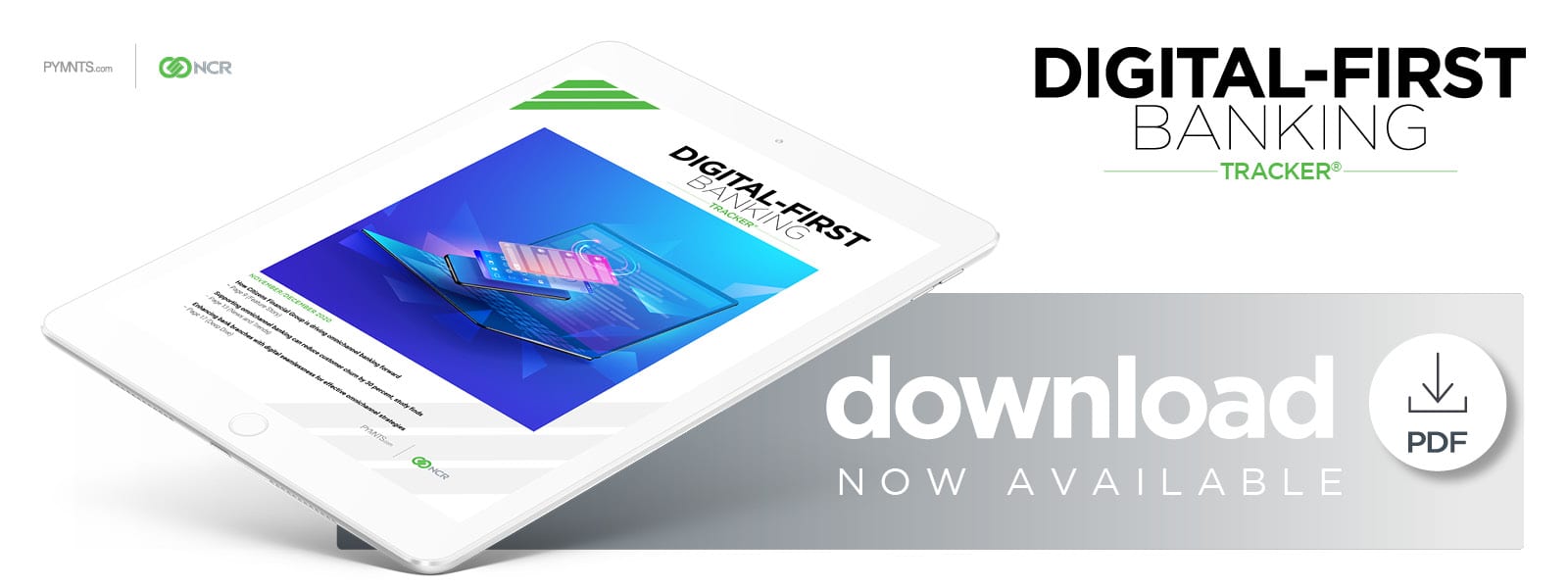Deep Dive: Why FIs Must Meld The Digital With The Physical To Stay Competitive

The pandemic has had a significant impact on consumer adoption of online and mobile banking services as more people are digitally engaging with their banks to curb health risks.
Mobile banking use is ticking up, especially among younger users, with PYMNTS data showing that 75.9 percent of Generation Z members use mobile banking apps, for example. Consumers like mobile banking for its personal touch and convenience factor, with 44.8 percent of consumers noting that they prefer banking experiences that are mainly digital or otherwise mostly reliant on digital and mobile tools.
The pandemic may have accelerated uptake of these online tools and services, but it has not affected branch-based banking. Consumers are still reluctant to give up on in-person banking habits completely, with one study finding that 60 percent of U.S. consumers still want to visit physical branches to open new accounts, in particular. A report from Coconut Software and WBR Insights shows that the share of consumers using banks with branch locations has not decreased since 2019, holding firm at 94 percent.
This indicates that consumers are still placing a high degree of value on physical branches even as they rely more heavily on digital and mobile solutions. This is a trend that is also beginning to affect what they want out of their overall banking experiences, with many asking for seamless support in online, mobile and physical banking channels from their financial institutions (FIs).
The following Deep Dive explores why FIs are equipping their physical bank branches with enhanced tools, such as ATMs, as well as upgrading digital and mobile banking channels to create well-rounded experiences for consumers. It also examines how consumers’ expectations are changing and why an omnichannel approach is an effective strategy for keeping these users engaged.
Bank Branches’ Lasting Legacy
It may seem counterproductive for FIs to set aside resources to augment branches when growth in online and mobile banking adoption is rapidly expanding. This is especially the case as it becomes increasingly clear that many consumers are viewing their online or mobile banking channels as their primary ways to interact with their banks.
The Coconut Software report found that 76 percent of consumers think it is “very” or “extremely important” for FIs to regularly upgrade their digital and mobile banking solutions, for example. Consumers do not appear to value the availability of these features more than that of brick-and-mortar branches, however. The study also found that while 14 percent of consumers named offering a quality mobile app as the top factor they considered when starting a new banking relationship, 16 percent listed their top consideration as whether prospective FIs had branches near their homes or offices. One of the services that consumers also cite as most important to their physical branch experience is ATMs, with 71 percent noting seamless access to ATMs or other self-service machines as a critical factor when they are banking in branches.
Consumers do not want to have to choose between digital and branch-based banking but instead want to seamlessly switch between these channels however they like. Another study found that consumers cited more or less equal preferences for having physical and online banking. FIs should therefore be working to keep branches just as accessible and convenient for customers as their mobile banking channels, but this can be tricky, depending on where banks have been funneling their resources.
Many FIs tend to treat branches and online banking as completely separate channels, with separate teams or departments focused on each. Eighty-eight percent of banks stated in one report that they have specific strategies to manage their branch networks while 76 percent stated they had strategies to manage their digital banking platforms — only 49 percent claimed they had omnichannel strategies that could easily manage both. Consolidating their approaches to digital and physical banking would not only be a more efficient work strategy but would also allow a more coordinated focus on what consumers are looking for.
How Omnichannel Gives Banks A Leg Up
Consumers are not seeking the same personalized, human connections they have received from the physical branch experience for decades, but they are instead looking for ones with a digital twist. Customers still appreciate the personal touches attached to in-person banking, with 44 percent stating in the Coconut Software report they would prefer to have discussions with bank associates within physical branches, for example. The convenience of mobile and online banking means they are searching for ways to make that physical visit occur with the same speed and seamlessness they have come to expect from digital platforms.
Merging certain aspects of that online convenience within branches could therefore be one way that banks could stand a cut above the competition, such as by integrating contactless ATMs or by designating spaces within mobile apps for consumers to prepare for or schedule branch visits. Seventy-two percent of consumers agreed in the Coconut Software report that having the ability to schedule in-person appointments would notably help them save time.
Banks will need to work quickly to ensure they can upgrade their branches in ways that speak to consumers’ emerging preferences for personalization. Failing to bring an appropriately digital edge to brick-and-mortar branches could see consumers move on to other FIs that have already taken this omnichannel leap.
